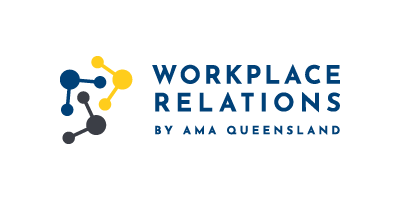Award and superannuation rates changes
The Fair Work Commission handed down the Annual Wage Review 2025-2026 decision on 3 June and confirmed the minimum rates of pay under the Health Professionals and Support Services Award 2020 and the Nurses Award 2020 will increase by 3.5 per cent effective 1 July 2025.

The Workplace Relations Team will release the Rates of Pay Guide for 2025-2026 in July for employees in line with the commission’s determinations for employees under both Awards. The superannuation guarantee will increase from 11.5 per cent to 12 per cent from 1 July 2025. Employers will need to use this new rate to calculate super on payments made to employees on or after 1 July.
Before and after the changes on 1 July, it is common for practice owners and practice managers to have questions about what this may mean and the impact to salary increases for review cycles outside this timeframe and above the award.
When would salary increases be considered?
Generally, salary increases are considered for:
- Merit-based increase: for individuals consistently performing well, meeting or exceeding expectations and significantly contributing to the Practice’s success.
- Change in award classification: for individuals who have changed classification under the relevant award and as a result will change pay level.
- Cost of living adjustments: some practices provide salary increases to keep up with the rising cost of living. This is usually based on inflation rates and are intended to ensure that an employee’s purchasing power remains relatively stable over time.
- Market demand: is driven by the recruitment market, where the aim is to retain particular skills or expertise within the practice. An employer acknowledges that retaining an employee with particular skills and expertise with additional knowledge of the practice is preferable to going out to market to attract the same skills and experience where there is a skills shortage in the market.
Strategies to consider when addressing remuneration reviews include starting with clear communication about salaries. This should align with your practice’s budget for the year and the expected pay for employees, while bridging the gap in salary expectations between employees and employers.
Another strategy is to make appropriate salary increases aimed at reducing the pay gap between staff, particularly those who are on the same classification under the relevant award. It is important to remember that since 7 December 2022 legislation has been in place regarding the omittance of pay secrecy clauses from contracts of employment so your team can openly discuss with each other what they are being paid and if they receive any additional benefits.
When reviewing staff salaries, how do we address employees who have gone above and beyond in contributing to the success of your practice? It would be pertinent here to consider additional reasons apart from remuneration why employees stay in their job, which can assist with not only retaining your best performers but with recruiting the best candidates.
What are the reasons why employees stay in their jobs? There are a variety of reasons we can consider such as:
- Job satisfaction: employees are more likely to stay when their work is fulfilling, challenging and aligned with their skills and interests.
- Recognition and appreciation: feeling valued by their managers and colleagues for their contributions boosts morale and encourages loyalty to their practice or hospital.
- Opportunities for growth: clear paths for career advancement, skill development and learning opportunities help keep employees engaged and motivated to grow.
- Work-life balance: flexible work schedules, remote work options and policies that support a healthy work-life balance contribute to employee retention.
- Company culture and values: a positive work culture that fosters collaboration, diversity, inclusion and a sense of belonging encourages employees to stay and thrive.
- Compensation and benefits: competitive salaries, bonuses, health benefits, retirement plans, and other perks are essential in retaining talent and demonstrating the organisation’s commitment to employee well-being.
- Job security: confidence in the stability and future prospects of their job reduces employee turnover.
- Relationships with colleagues: strong bonds with co-workers and a supportive team environment create a sense of camaraderie, making employees less likely to leave.
- Leadership and management: effective leadership that provides clear direction, support and feedback fosters trust and loyalty among employees.
- Alignment with personal values and mission: employees are more likely to stay when they believe in the company’s mission, vision and values and feel their work contributes to a greater purpose.
The latest 2025 employment and salary report by People2People looks at the future of recruitment, job seekers expectations, company culture and current labour market trends across Australia, New Zealand and the United Kingdom.
People2People, Edge Recruitment and Frog Recruitment have released their report on Talent Retention – What Matters Most in 2025:
- Work-life balance 74 per cent which is up from 68 per cent in 2024
- Careers opportunities 70 per cent down from 71 per cent in 2024
- Job security 70 per cent up from 67 per cent in 2024
- Management support and trust 69 per cent down from 70 per cent in 2024
- Training and development 67 per cent down from 69 per cent in 2024
With this information in mind, on 1 July 2025 the Fair Work Commission will release their increase in minimum rates of pay that may impact how practices consider pay for their staff.
The Workplace Relations team have put together an FAQ guide to understand any changes that may be made and any changes you may have to make.
 | AMA Queensland Workplace RelationsPhone: 07 3872 2264
|